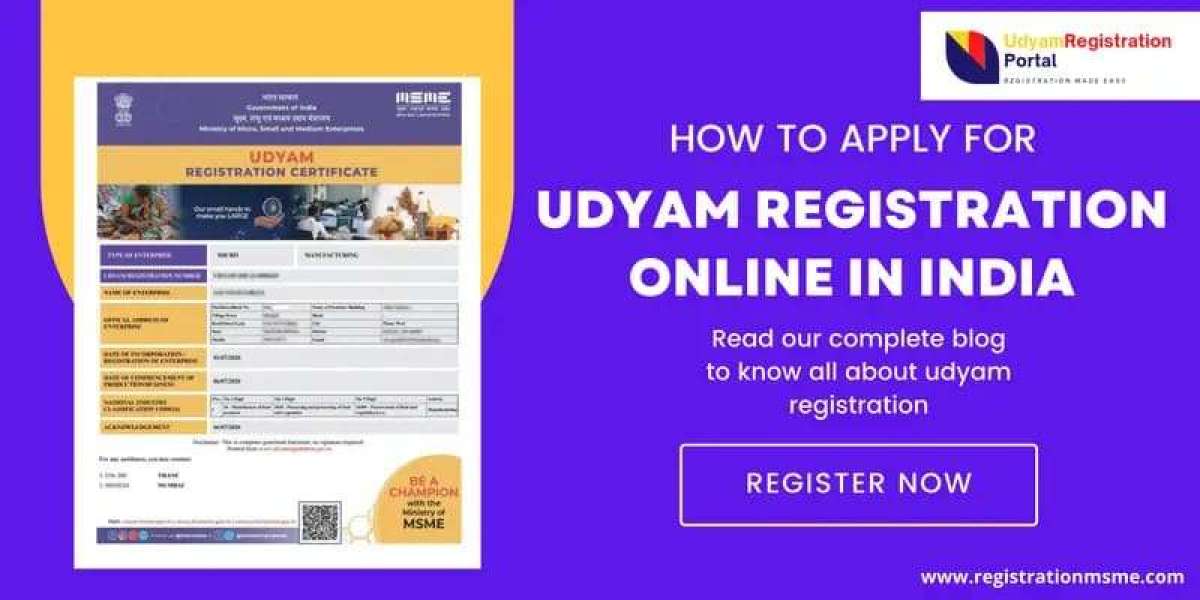In India, Micro, Small, and Medium Enterprises (MSMEs) form the backbone of the economy, contributing significantly to GDP, employment, and the overall industrial output. However, access to credit has historically been a hurdle for MSMEs, limiting their ability to grow, innovate, and compete in the market. With the introduction of Udyam Registration in 2020, the government has taken a big step toward supporting financial inclusion for MSMEs, making it easier for them to secure loans and access a range of financial benefits.
What is Udyam Registration?
Udyam Registration is an online government registration process for MSMEs, launched by the Ministry of Micro, Small, and Medium Enterprises. It replaces the old Udyog Aadhaar system and provides a simplified, single-window registration process. MSMEs are categorized based on investment and annual turnover, with distinct classifications for micro, small, and medium enterprises. By obtaining Udyam Registration, MSMEs gain official recognition and eligibility for numerous schemes, subsidies, and, importantly, access to easier credit.
The Role of Udyam Registration in Facilitating Loans for MSMEs:
Udyam Registration plays a crucial role in enabling MSMEs to secure loans from various financial institutions. Here’s how it facilitates financial access:
Official Recognition for Easier Loan Approval:
Udyam Registration offers MSMEs a recognized certificate from the government, which serves as a mark of authenticity and reliability. Financial institutions, especially public sector banks, often favor Udyam-registered MSMEs over unregistered businesses. The registration certificate adds legitimacy, making it easier for lenders to trust these enterprises and approve loans.
Access to Collateral-Free Loans:
Under the Credit Guarantee Fund Scheme for Micro and Small Enterprises (CGTMSE), Udyam-registered MSMEs can obtain collateral-free loans. This scheme provides credit guarantees to financial institutions, allowing MSMEs to access loans without the need to pledge assets or property as collateral. This is especially beneficial for smaller enterprises that may not have substantial assets to secure loans.
Priority Sector Lending (PSL):
Udyam Registration also enables MSMEs to be eligible for Priority Sector Lending (PSL), a mandate by the Reserve Bank of India (RBI) that directs banks to allocate a portion of their lending to priority sectors, including MSMEs. Through PSL, registered MSMEs can access loans at preferential rates, enabling them to access credit at a lower cost. PSL also incentivizes banks to provide financial support to MSMEs, further fostering financial inclusion.
Lower Interest Rates and Subsidized Loan Schemes:
Various loan schemes, such as the Pradhan Mantri MUDRA Yojana (PMMY) and Stand-Up India, offer reduced interest rates specifically for Udyam-registered MSMEs. The government offers interest subventions on certain loans, lowering the cost of borrowing and reducing the financial burden on MSMEs. These benefits give registered MSMEs a more affordable way to access funds for expansion, infrastructure improvement, or operational needs.
Dedicated MSME Credit Card Facility:
Some financial institutions provide MSME credit cards, which offer short-term loans and working capital to Udyam-registered businesses. These credit cards are designed to meet the immediate financial needs of MSMEs, such as inventory purchases or equipment maintenance, with convenient repayment terms. Credit cards for MSMEs typically offer competitive interest rates and are available only to registered MSMEs.
How to Use Udyam Registration to Secure Loans?
To take full advantage of the financial benefits associated with Udyam Registration, MSMEs should follow these steps:
Complete the Udyam Registration Process:
Begin by registering your MSME on the Udyam Registration portal (udyamregistration.gov.in). This straightforward process requires basic information, such as the Aadhaar number of the owner and PAN details for the enterprise. Once the registration is complete, the MSME will receive a unique Udyam Registration Number (URN) and certificate, which can be presented to banks and lenders.
Explore Suitable Loan Schemes:
After obtaining Udyam Registration, MSMEs should research available government-backed loan schemes. Understanding the eligibility criteria, interest rates, and terms of schemes like the MUDRA Yojana, Stand-Up India, and CGTMSE can help business owners select the most beneficial loan option.
Prepare a Comprehensive Business Plan:
Even with Udyam Registration, presenting a clear business plan can improve loan approval chances. Lenders appreciate detailed financial projections, market analyses, and growth strategies, as they demonstrate the enterprise’s ability to repay the loan. A well-prepared business plan can also help in securing higher loan amounts and better terms.
Leverage Priority Sector Lending:
Approach banks and lending institutions with a focus on Priority Sector Lending (PSL) options. Udyam-registered MSMEs are eligible under PSL mandates, giving them an advantage in securing loans at favorable rates. Some banks even have dedicated MSME loan officers who can guide businesses through the process.
Conclusion:
Udyam Registration has revolutionized how MSMEs in India can access financial resources, helping bridge the credit gap that has long hindered their growth. With benefits such as collateral-free loans, priority sector lending, lower interest rates, and access to government schemes, Udyam Registration has made financial inclusion a reality for MSMEs. For small business owners, securing loans with Udyam Registration isn’t just about accessing funds; it’s about unlocking opportunities to expand, innovate, and drive the economy forward. By completing Udyam Registration, MSMEs position themselves to capitalize on financial resources that fuel growth and secure a sustainable future in the competitive market.








